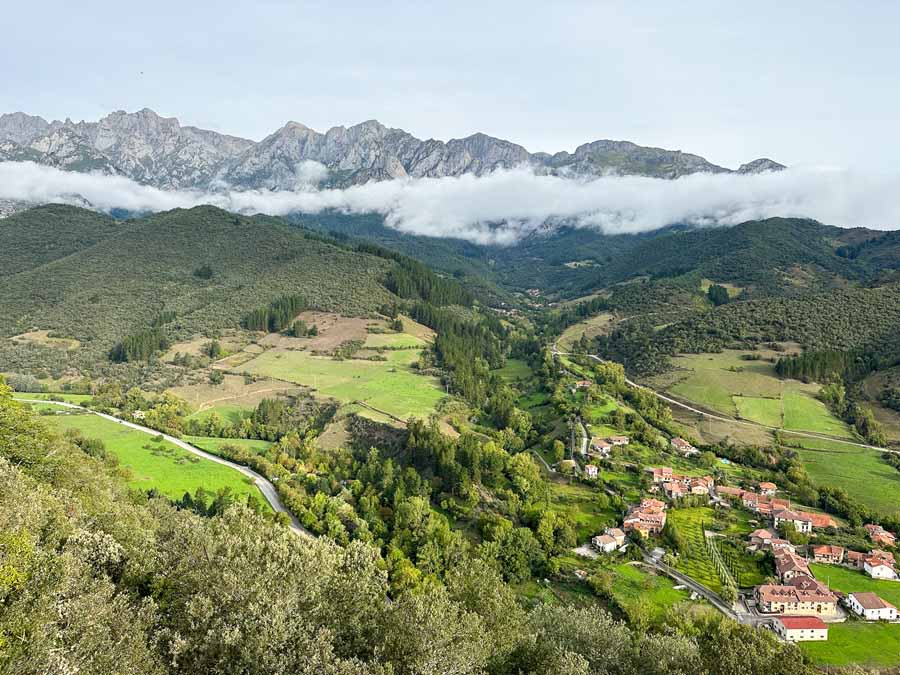The Municipal Albergue in Potes
The Albergue Municipal of Potes is located in the heart of the city steps away from the Puente de la Cárcel. Look for the steps down near the plaza. It’s positioned along the river and is very typical of a standard Municipal Albergue that you would find on any route.
You will need to have a sleeping bag, there is no Wi-Fi, and the kitchen does not have a stove and is minimally stocked.
No worries, as Potes has lots of spaces within the city with free Wi-Fi. There is an abundance of places to eat, cafes, grocery stores, and laundry facilities. Potes is a hub village for those looking to explore the Picos de Europa National Park, so there is no need to worry about the basic facilities.
- Municipal Albergue
- Pilgrim Beds: 52
- Open: Year Round with the Doors opening at 12:00
- Pilgrim Credencial Required: Yes
More Places to Sleep in Potes
Some pilgrims want to relax and enjoy Potes. Remember, if you want to stay an extra day or two in Potes, you must move to a private room. These are some of the top places to stay in Potes.
My Personal Budget for the Camino Lebaniego

So how much did the Camino Lebaniego cost? This Camino route took me 3 days and I stayed in simple Albergues in shared rooms along the entire route. There are fewer services on this route, so communal meals are a must.
I included my expenses for my zero day in San Vicente de la Barquera. This includes a night in the Nomada Hostel and food supplies. This Camino Lebaniego budgets spans over 4 days.
There are also very limited services to stop for coffee or meals outside the albergue or accommodation options until you arrive in Potes. So while the albergues were a little more expensive than most routes, there really are no daily expenses outside of the albergue and meals.
I walked the Camino Lebaniego in September 2024.
| Expenses | Euro (€) |
| Accommodation (Albergues) | €62 |
| Meals (Mostly Communal) | €31 |
| Groceries | €27.50 |
| Snacks & Beverages | €18.50 |
| Laundry | €6 |
| Donativo (Certificate & Tube) | €2 |
| Total | €147 |
The three days walking the Camino Lebaniego with the night in San Vicente de la Barquera the night before cost me around €147. Over four days, this averages to around €36.75 per day. I saved money by staying in the Albergues and not opting for private rooms.
Remember, the only food options are really at the Albergues in the communal dinners until you arrive at Potes.
If you stay an extra night in Potes, you must move into a private room, so it will increase expenses.
After walking to Potes, you may need to rejoin the Camino del Norte by taking a morning bus back to Muñorrodero. Alternatively, you could continue on one of the different Camino routes.
The three main routes that rejoin the Camino Frances: Camino Castellano (Carrion de los Condes but finishes in Palencina), Camino Leones (Sahagun), and the Camino Vadiniense (Mansilla de las Mulas).
There is also a route, the Camino Lebaniego Asturiano, that leads pilgrims to Oviedo to walk the Camino Primitivo into Santiago de Compostela.
Tips for Continuing Onwards on the Camino Vadiniense

I chose to walk the Camino Vadiniense that heads out of the Picos de Europa and rejoins the Camino Frances in Mansilla de las Mulas. This route is typically walked over 6 – 7 days and is named after the tribes who lived in the foothills of the Picos de Europa before the Roman Conquest.
I followed the Camino Vadiniense into one of my favorite cities on the Camino Frances, Leon.
It’s worth noting that the route between Potes and Mansillas de las Mulas sees very few pilgrims and reservations are a must in some stages. Services are even more limited on the Camino Vadiniense than on the Camino Lebaniego.
There are also fewer Camino markers so an offline map is essential. I also found route information hard to come by, so I’ll share some of my best tips on this little trekked Camino route.
On the Camino Vadiniense, be prepared for a lonely road with hardly any pilgrims. That being said, this is a beautiful and untouched Camino route with many challenges. Those who undertake it will be rewarded with solitude and a deep appreciation for the lost tribes who called this area home and some of the last to resist the Roman conquest.

